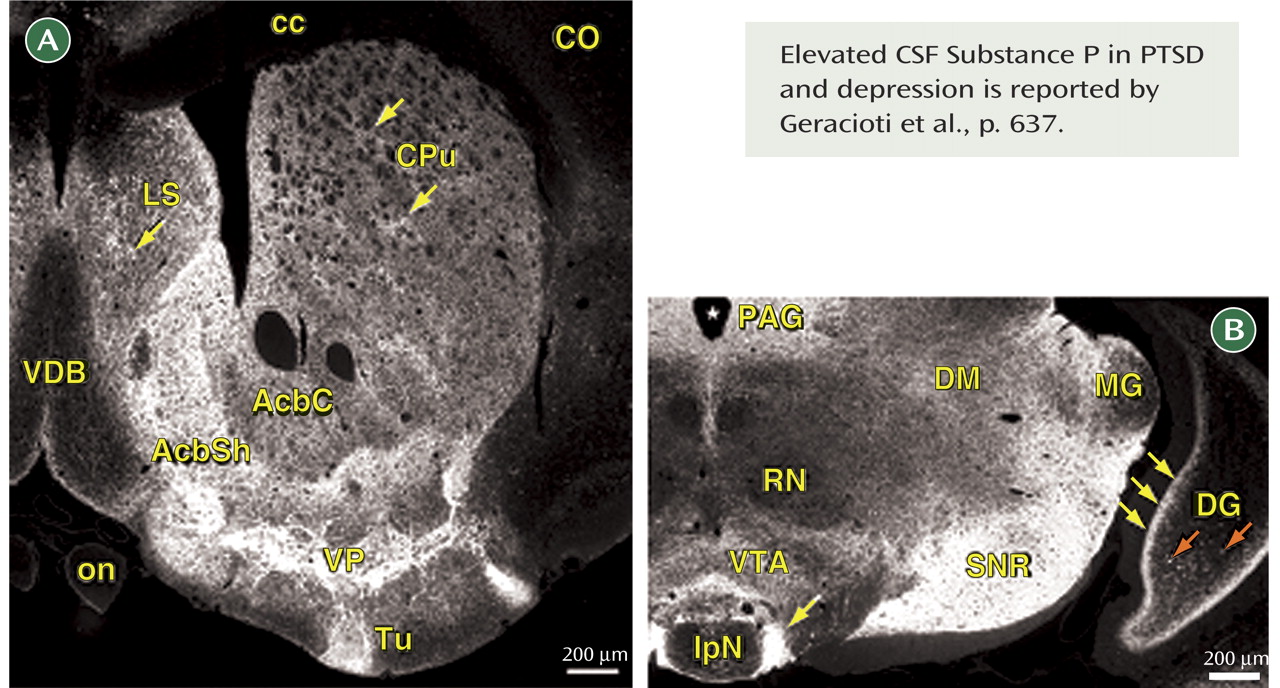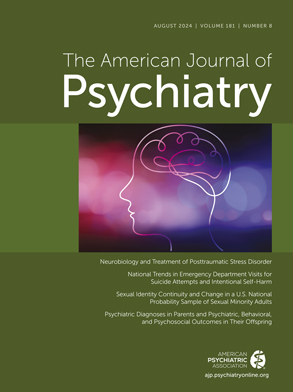Substance P is an 11-amino acid peptide belonging to the tachykinin family; it is widely distributed throughout the nervous system of human and animal species. Peptides are synthesized through translation and transcription, different from the classsic neurotransmitters. Substance P is synthesized from a large precursor protein in the endoplasmic reticulum then transferred to the Golgi apparatus for packaging and finally transported to the cell membrane for exocytotic release. After synthesis, post-translational processing modifies the peptide structure. Substance P is normally present at relatively high concentrations in nerve endings in selected regions of the mammalian brain, hence it is functionally available. Peptides almost always coexist with classic transmitters, suggesting that their actions are complementary to these classic transmitters. For example, substance P co-exists with serotonin, thyrotropin-releasing hormone, and probably glutamate in some bulbo-spinal neurons. In man, substance P co-exists with serotonin in many dorsal raphe neurons projecting to wide spread forebrain areas as well as with GABA and dynorphin in the striatal medium spiny neurons. Neurons may thus release a “cocktail” of messengers (peptides and classical transmitters) when stimulated to produce a spectrum of actions. In this regard, classical transmitters and peptides differ in their mode of synthesis and replacement after release. Transmitters are synthesized in nerve terminals and are taken back up into the presynaptic nerve ending after release; peptides are synthesized from DNA in the cell body, transported to the synapse, and, once released, metabolized, requiring new synthesis and axonal transport for further action. Substance P is present in dorsal root ganglion (primary sensory) neurons and has been functionally linked to pain. However, research into specific physiological roles for neuropeptides, including substance P, has remained elusive after several decades of research, but transmitter-like, trophic, and modulatory actions are seen for most peptides. It is interesting that levels of substance P (and other peptides) can change dramatically in response to traumatic environmental events, and it is thought that increases or decreases in peptide release, and in neuronal sensitivity to peptides, can help neural systems adapt to trauma, enhance survival, and promote recovery. Scientists have speculated that peptides exert their main actions when the nervous system is challenged or stressed, suggesting involvement with diseases of the brain and their availability as targets for therapeutic intervention. In fact, an antidepressant action of a substance P antagonist (NK1) was reported in 1998, but this effect could not be confirmed in subsequent trials.


